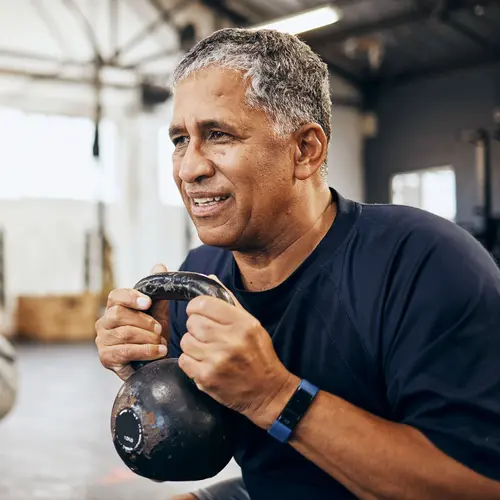Wearable weights are weights that you wear on your body when you exercise. They include ankle weights, wrist weights, and weighted vests.
Some people add wearable weights when they walk or run to boost the intensity of a workout. But there are some risks when exercising with wearable weights.
Ankle Weights
These are weights attached to a wide strap that wraps around your ankle with Velcro.
Benefits. Exercising while wearing 1 pound to 3 pound ankle weights may raise your heart rate by about three to five beats per minute. It may also boost your oxygen consumption by 5% to 10%.
Wearing ankle weights while walking may also make your gluteus medius muscle work harder. Your gluteus medius muscle attaches to your hip to stabilize your pelvic area. Some lower back pain is caused by a weak gluteus medius muscle.
As you age, you lose some sense of joint position. This may lead to changes in your gait and a higher risk of falling. A study of adults ages 60 to 70 found that wearing ankle weights that are 0.5% or 1% of your body weight can help knee joints work the way they should. But problems increase with weights that were 1.5% of their body weight.
Risks. Walking or running with ankle weights can cause a muscle imbalance. This is because ankle weights make you use the muscles in the front of your thighs (quadriceps) more. When you walk, you should use the muscles at the back of your thighs (hamstrings).
Running or walking with ankle weights may also strain your ankle joint. This raises the risk of injury to your hips, back, and knees.
Instead of wearing ankle weights when walking or running, you may want to wear them when doing leg exercises like leg lifts.
Wrist Weights
Wrist weights have a wide band that wraps around your wrist.
Wear wrist weights that are less than 3 pounds. Anything heavier can put too much stress on your joints and on your shoulder and arm muscles.
Benefits. Adding wrist weights to your exercise routine can boost the intensity of your workout. Using weights between 1 pound and 3 pounds can increase the amount of oxygen you breathe by 5% to 15%. It also raises your heart rate by five to 10 beats per minute.
When you exercise with weights, you tend to swing your arms more. Some research has shown that much of the change in oxygen and energy use is because your upper body is more actively engaged. So all you may need to do to get these benefits is swing your arms more when you exercise.
Researchers found that energy consumed per minute and per mile of exercise went up when people added wearable weights when walking. Hand weights raised the intensity more than ankle weights. Walking at 4 miles per hour with ankle and hand weights had a similar intensity as running at 5 miles per hour.
Weighted Vests
A weighted vest is a vest with weights attached to it. It usually has straps to hold it in place and pockets that let you add weights.
Pick a weighted vest that’s no more than 10% of your body weight. For example, if you weigh 180 pounds, your weighted vest shouldn’t exceed 18 pounds.
Benefits. Wearing a weighted vest can add intensity to your walk without straining your hands and ankles.
Weighted vests can also be good for long-term bone density. In a 5-year study, women who wore weighted vests while doing jumping exercises kept their bone density stable. Those who weren’t in the exercise program lost 3% to 4% of the bone density in their hips.
Wearing a weighted vest during exercise can also help with balance. A 6-week study of women who had been through menopause found that those who walked on a treadmill wearing a weighted vest improved their balance more than those who walked without a vest.
Risks. Because it puts pressure on your spine, a weighted vest might make neck or back problems worse.
Adding too much weight or overdoing it with wearable weights can lead to overuse injuries like bursitis, tendonitis, and strains or sprains.
Bursitis is when the small, fluid-filled sacs that cushion your bones, muscles, and tendons become inflamed. Tendonitis is when a tendon, the thick fibrous cord that connects your muscle and bone, becomes inflamed or irritated. With a sprain, the thick bands of tissue that connect two bones in your joints stretch or tear. A strain is when the muscle or tendon connected to a bone stretches too far or tears.
How to Use Wearable Weights
When exercising with wearable weights:
- Talk to your doctor before you start, especially if you have any problems with your balance, joints, or back.
- Think about adjustable weights so you can add or remove weights whenever you want.
- When you start with wearable weights, go with a lighter weight and walk slower than your regular pace. As you get comfortable, you can speed up and increase the weight.
- If you're wearing wrist weights, try to vary your arm movements if you feel any strain.
- Don’t swing your arms too much. This puts stress on your joints.

